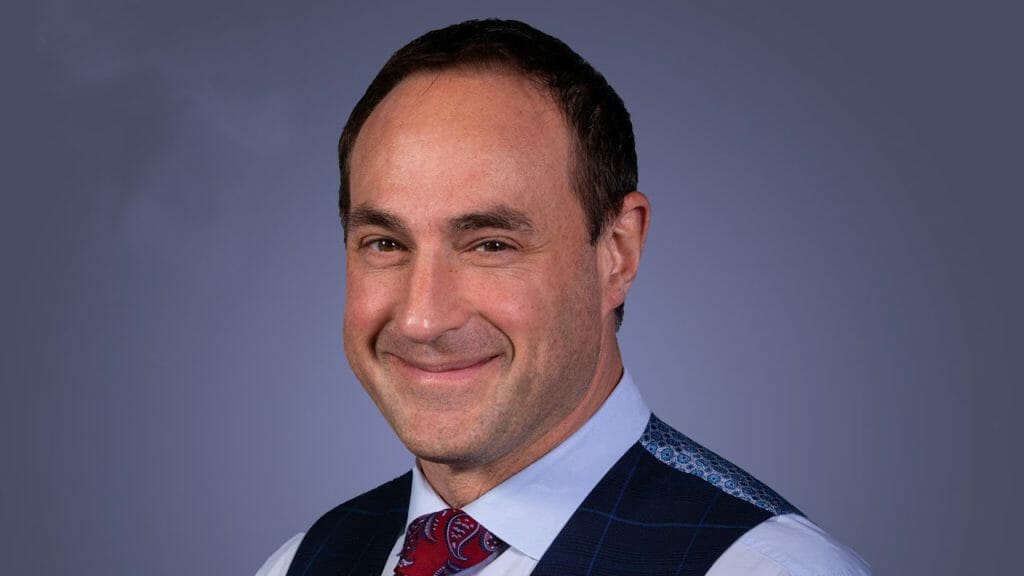The healthcare industry had its share of headwinds in 2023, including declining payor issues and reimbursement for physicians as well as a significant dose of additional — direct and indirect — inflation-related challenges. While some of these factors may continue to impact healthcare in 2024, Dr. David Jacofsky, founder, CEO and chairman of HOPCo, The CORE Institute, and its affiliated entities predicts a number of likely tailwinds. The possibility of reduced premium patient costs and an emphasis and increase in value-based healthcare services are some of the trends inching toward the horizon in the new year. Take a look at more insights from Jacofsky for what’s to come in healthcare during 2024.
AZ BUSINESS LEADERS: David Jacofsky, MD, chairman of HOPCo and The CORE Institute
HEALTHCARE NEWS: Who’s Who in Arizona Healthcare for 2024
Az Business Leaders: Are there any Arizona-specific healthcare trends you see on the horizon going into the new year?
Dr. David Jacofsky: I think we will continue to see the consolidation of healthcare practices throughout the state, as well as ongoing headwinds related to staffing costs and shortages of certain specialty coverage, such as anesthesia.
The increasing administrative requirements and costs of running facilities and practices make it difficult for smaller organizations to simultaneously maintain financial success while also delivering high-quality care and new technologies. The infrastructure investment needed for necessities such as meaningful cybersecurity, modern integrated phone systems, compliance programs, augmented reporting requirements, and supply chain logistics, coupled with increasing denial rates and eroding practice reimbursements from payors, has created an environment in which partnerships with entities that already have economies of scale to ensure success may now make sense.

ABL: How did the concerns regarding a possible recession impact the healthcare industry this year?
DJ: Similar to what was seen during the peak of COVID-19, many patients likely defer receiving care due to looming economic pressures. The costs associated with non-emergent care, combined with increased costs of living due to inflation, put a strain on many families who may have had to decide between delaying care or paying real-life bills at home.
This is where HOPCo’s mission and vision around value-based care make the largest impact. Our goal is to reduce the cost of care for patients and payors while simultaneously improving outcomes. By following evidence-based clinical guidelines, HOPCo’s musculoskeletal practice partners can deliver the right care at the right time for patients. In many cases, this means providing more conservative and non-surgical options, which are often less expensive and thus result in less financial impact for patients.
Over time, bending the spending trend for healthcare costs should lead to a reduction in premium costs for people.
ABL: What HOPCo headwinds and/or tailwinds can you share coming off of 2023, and do you anticipate these will carry over into 2024?
DJ:The headwinds seen nationally related to inflation, increasing reporting requirements, increased denial rates, and the need for meaningful infrastructure to remain competitive in healthcare have been tailwinds for HOPCo to some extent.
This year was one of focused growth for HOPCo. We partnered with a number of additional health systems around the country, including Memorial Healthcare System in Florida. We also strategically expanded our footprint in Southwest Florida, Philadelphia and Wisconsin. In Arizona specifically, through a partnership with Arizona Neurosurgery and Spine Specialists, we have created a spine team of more than 50 providers, allowing our patients increased access to the entire gamut of musculoskeletal spine and neurologic care.
The headwinds of payor challenges and declining reimbursement for physicians in the face of high inflation have helped further drive interest in the value-based care models we developed over a decade ago here in Arizona, many of which are now being adopted nationally as musculoskeletal practices and hospitals seek to transform the delivery of care in their market. We anticipate seeing more growth in 2024 and already have partnerships with practices, payors and health systems that will be announced in Q1 of 2024.
ABL: The integration and prominence of artificial intelligence (AI) has been a mixed bag for many industries. How do you feel the healthcare industry is navigating the growth and further application of AI?
DJ: AI has shown a lot of promise in many industries. However, much of that promise still remains unharnessed as leaders are still learning about the true capabilities of AI and, in many cases, what “AI” even really means definitionally.
HOPCo has been an early adopter of AI technology in healthcare by acquiring a London-based healthcare tech company, Future Health Works. This innovative software, including myrecovery and msk.ai, has unique capabilities that include remote patient monitoring (RPM) with real-time patient feedback, artificial intelligence, two-way chat, computer vision and patented motion capture technology. This unified platform is helping to better engage and empower patients, add convenience and help scale value-based care.
HOPCo’s platforms include a full suite of predictive analytics capabilities that serve as an early identifier of patients at higher risk for adverse outcomes or hospital readmissions. HOPCo is bullish on new technology and AI, but also believes that there will be a long period of “norming,” in which many of the companies and concepts around this new buzzword, will need to prove that they add real value without adding real risk to patients and privacy.
ABL: How does HOPCo help capture and retain skilled employees in a competitive hiring market?
DJ: HOPCo believes that retention and recruitment come down to culture. Our existing staff remain our best recruiters. We keep our vision and mission front and center, focusing on market transformation and keeping the patient front and center so that everyone knows why their work is meaningful. However, there is no denying that we still remain in a competitive environment as it relates to staffing and inflation, so we continue to believe that culture must remain the differentiating factor for retention. Finally, providing growth opportunities for employees in a rapidly growing company, and providing opportunities for professional development of new skills is also key to retaining those in the market with potential.




